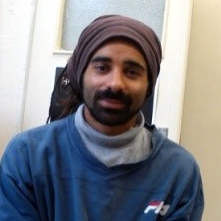
Recording of electrophysiological activity from dorsal horn neurons in acute spinal cord slices with patch-clamp technique.

The main research interest of our department is to study mechanisms of pain and to explore new possibilities of pain treatment, especially in chronic states. Our experimental work is concentrated on the modulation of nociceptive information at the spinal cord level that is the relay center between the periphery and the higher brain areas. Our goal is to study these modulatory mechanisms in order to improve therapy for pain conditions, such as allodynia, hyperalgesia, neuropathic and cancer related pain. Our focus is on the role of TRPV1 receptors and inflammatory cytokines. In our research we use mainly electrophysiological, immunohistochemical and behavioral methods. Another project is directed towards the role of thyroid hormones (THs) and omega-3-polyunsaturated fatty acid (n-3 PUFA) in the physiology of cardiac and skeletal muscles. Models of hyper- and hypothyroid status are used to analyze potential influence of n-3 PUFA on the induced pathological changes.
Projects
More
More
More
We study the effect of n-3 PUFA on physiological parameter changes induced by altered thyroid hormone levels.
More
N-acylphosphatidylethanolamine (NAPE), as the precursor of anandamide, an endogenous agonist of TRPV1 and cannabinoid receptors, could play a role in modulation of nociceptive signalization in the spinal cord.
More
Achievements
Altogether 70 scientists from 17 foreign countries and 6 from the Czech Republic have attended the meeting as registered participants.
More
More
More
Publications
Soukup, Tomáš - Smerdu, V.
Effect of altered innervation and thyroid hormones on myosin heavy chain expression and fiber type transitions: a mini-review
.
Histochemistry and Cell Biology. 2015, Vol. 143, 2, p. 123-130
.
IF = 2.927
[ASEP]
[
doi
]
Soukup, Tomáš - Diallo, Michael
.
Proportions of myosin heavy chain mRNAs, protein isoforms and fiber types in the slow and fast skeletal muscles are maintained after alterations of thyroid status in rats
.
Physiological Research. 2015, Vol. 64, 1, p. 111-118
.
IF = 1.293
[ASEP]
Li, Y. - Adámek, Pavel - Zhang, H. - Tatsui, C. E. - Rhines, L. D. - Mrózková, Petra - Li, Q. - Kosturakis, A. K. - Cassidy, R. M. - Harrison, D. S. - Cata, J. P. - Sapire, K. - Zhang, H. - Kennamer-Chapman, R. M. - Jawad, A. B. - Ghetti, A. - Yan, J. - Paleček, Jiří - Dougherty, P. M.
The Cancer Chemotherapeutic Paclitaxel Increases Human and Rodent Sensory Neuron Responses to TRPV1 by Activation of TLR4
.
Journal of Neuroscience. 2015, Vol. 35, 39, p. 13487-13500
.
IF = 6.344
[ASEP]
[
doi
]
Uchytilová, Eva - Špicarová, Diana - Paleček, Jiří
.
TRPV1 antagonist attenuates postoperative hypersensitivity by central and peripheral mechanisms
.
Molecular Pain 2014, roč. 10, 2014, p. 67. ISSN 1744-8069.
IF = 3.654
[ASEP]
[
doi
]
Špicarová, Diana - Nerandžič, Vladimír - Paleček, Jiří
.
Update on the role of spinal cord TRPV1 receptors in pain modulation
.
Physiological Research 2014, roč. 63, suppl.1, s225-s236. ISSN 0862-8408.
IF = 1.293
[ASEP]
Show more

 Recording of electrophysiological activity from dorsal horn neurons in acute spinal cord slices with patch-clamp technique.
Recording of electrophysiological activity from dorsal horn neurons in acute spinal cord slices with patch-clamp technique.














